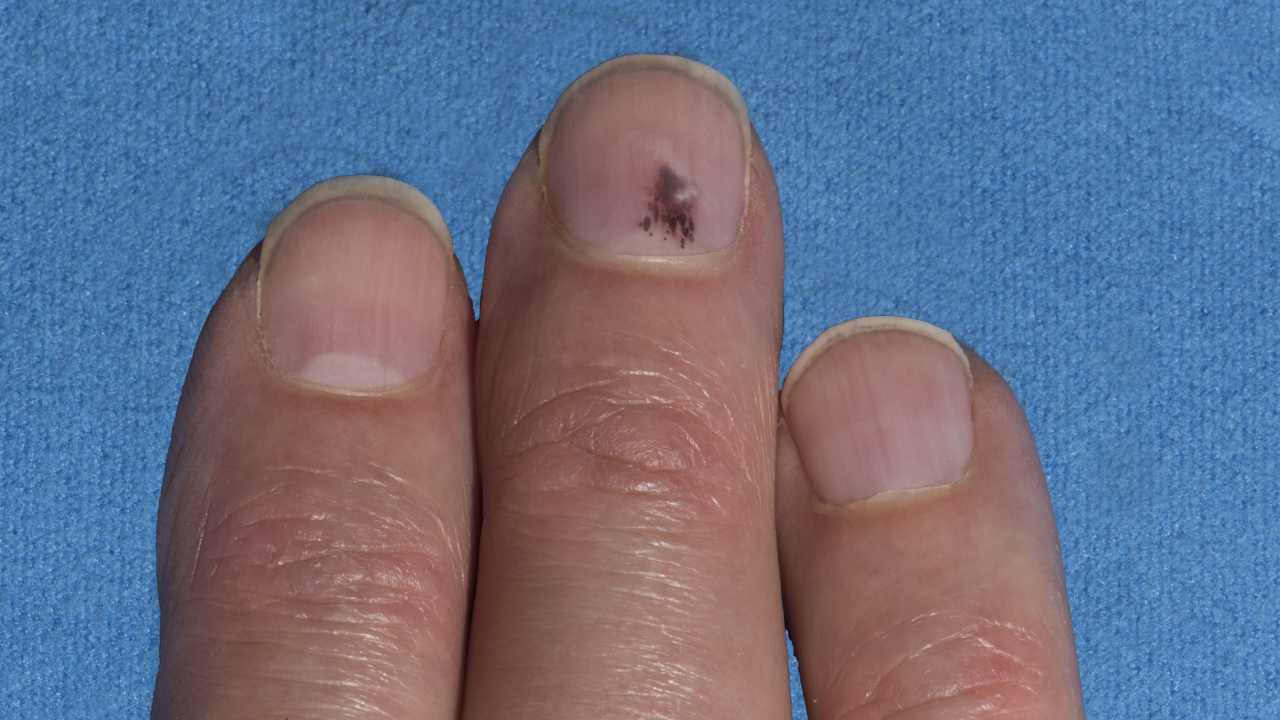 Via Pexels
Via Pexels
Melanoma is the most dangerous form of skin cancer.
“The American Cancer Society estimates that at present, about 120,000 new cases of melanoma in the US are diagnosed in a year. In 2010, about 68,130 of these were invasive melanomas. Melanoma kills an estimated 8,790 people in the US annually.”(1)
Hidden melanomas are cancerous skin lesions that occur in areas that are out of sight and are not usually examined. While the incidence of hidden melanomas is low, it is worth taking note of these places since treatment is most effective if caught early.
These potential sites of melanoma are summarized from Skincancer.net.
Nail bed
Melanoma of the nail bed is called “subungal melanoma”. These melanomas are relatively uncommon in whites -- only about 2 percent -- but occur much more often in non-whites, at 30 to 40 percent, according to Skincancer.net.
They develop equally in men and women but most often appear under the nail of the thumb or big toe as a brown or black streak that does not disappear with time.
Nose and Mouth
The nose and mouth are the most common primary site of mucosal tissue melanomas. That is because symptoms are so often attributed to other causes and are difficult to examine thoroughly. Nose bleeds and stuffiness can be misinterpreted as sinus trouble.
Melanoma in the mouth may appear like a pigmented mass. If accompanied with difficulty swallowing, it can be mistaken for canker sores. Yearly oral exams from your dentist can help screen for changes in the mouth.
Female Genitalia
Fortunately, a very small number of melanomas occur in the female genitalia and they are frequently detected with a vaginal exam. Signs and symptoms for vaginal/vulvar melanomas are similar to symptoms of other infections but patients with advanced melanoma will have a recognized change of a mole on the vulva.
Skincancer.net states that vaginal melanomas that do not begin first as vulvar melanomas are rare.
Anus
Melanomas of the anus are called “anorectal” since they usually include the rectum. Rectal bleeding is the most common symptom of advanced anorectal melanoma, which can be mistaken as coming from hemorrhoids. Persistent bleeding rectally should be checked by a doctor.
Urinary Tract
There are no signs of early stage melanoma of the urethra. In advanced stages, there may be blood in the urine, frequency, pain on urination or feeling the need to void but only small amounts of urine are passed.
Esophagus
Melanoma that first starts in the esophagus is extremely rare. There are no signs or symptoms of early stages. In later stages a tumor may cause difficulty swallowing, regurgitation, pain or bleeding. Surgery is the preferred treatment, followed by chemotherapy if necessary.
Scalp
Melanoma of the scalp is easily hidden by hair and symptoms may not appear until more advanced. Use of a blow dryer and comb to part the hair can help one examine the scalp. Surgery is usually performed and lymph nodes may be removed and tested from the neck. Other nodes may need to be tested if larger lesions are found to determine further treatment.
Eye
Melanoma can develop in the lining or one of the coatings of the eye. It may appear as a dark spot or scratchiness under the lid. Regular eye exams can help screen for this form of melanoma.
Though hidden melanomas are less likely to occur, we are reminded that those regular routine screening visits really do provide some extra opportunities to detect potentially cancerous skin lesions early.
These examinations do not take the place of the self-screening. It is important to continue to watch for signs of melanoma, which are:
A: Asymmetrical changes
B: Border irregularity changes
C: Color changes
D: Diameter growing bigger
E: Evolving changes that include new symptoms such as bleeding or itching
These self-screening practices should be done monthly and are best done after taking a shower.
Sources:
1. Melanoma. Skin Cancer Foundation. Web. Mar. 23, 2013.
http://www.skincancer.org/skin-cancer-information/melanoma
2. Hidden Melanomas. SkinCancer.Net. Web. Mar. 23, 2013.
http://www.skincarephysicians.com/skincancernet/hidden_melanomas.html
Michele is an R.N. freelance writer with a special interest in woman’s healthcare and quality of care issues. Other articles by Michele are at www.helium.com/users/487540/show_articles
Edited by Jody Smith





Add a Comment2 Comments
i like it
December 26, 2014 - 4:20pmThis Comment
My Melanoma was on the sole of my foot (acral lentiginous) It appeared as a "blister". Early detection saved my life!!! CHECK YOUR FEET TOO!
March 28, 2013 - 5:43amThis Comment